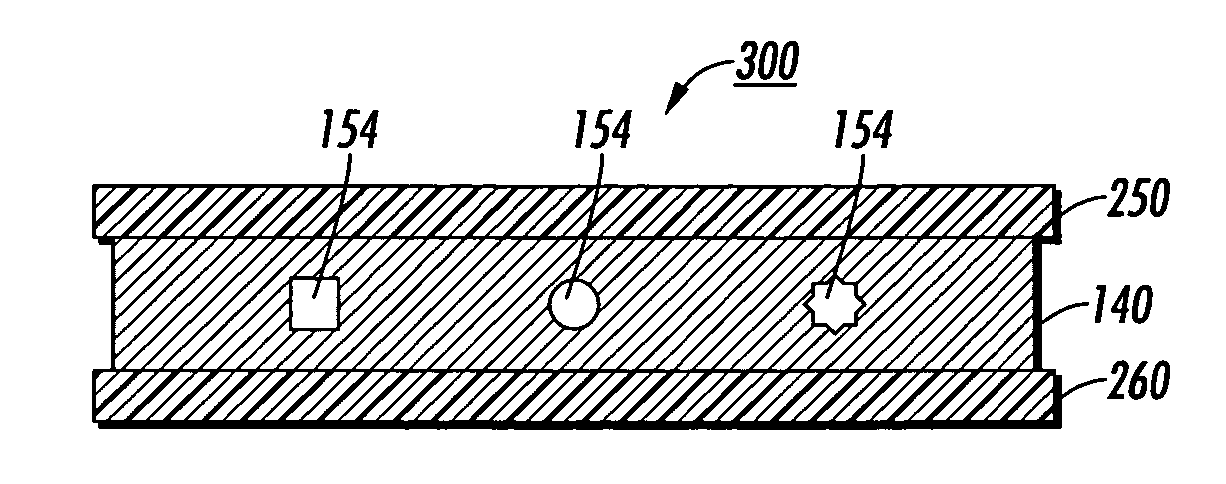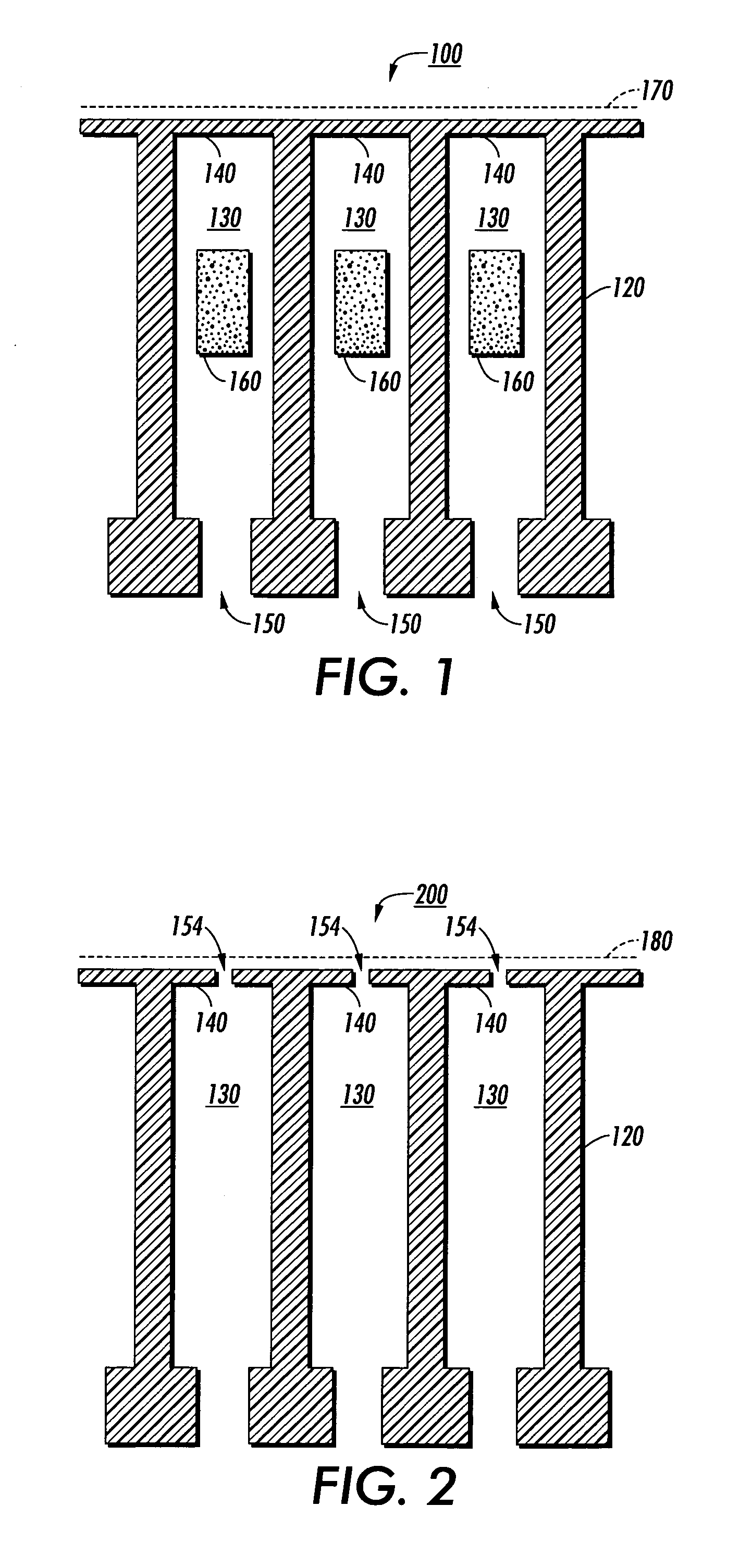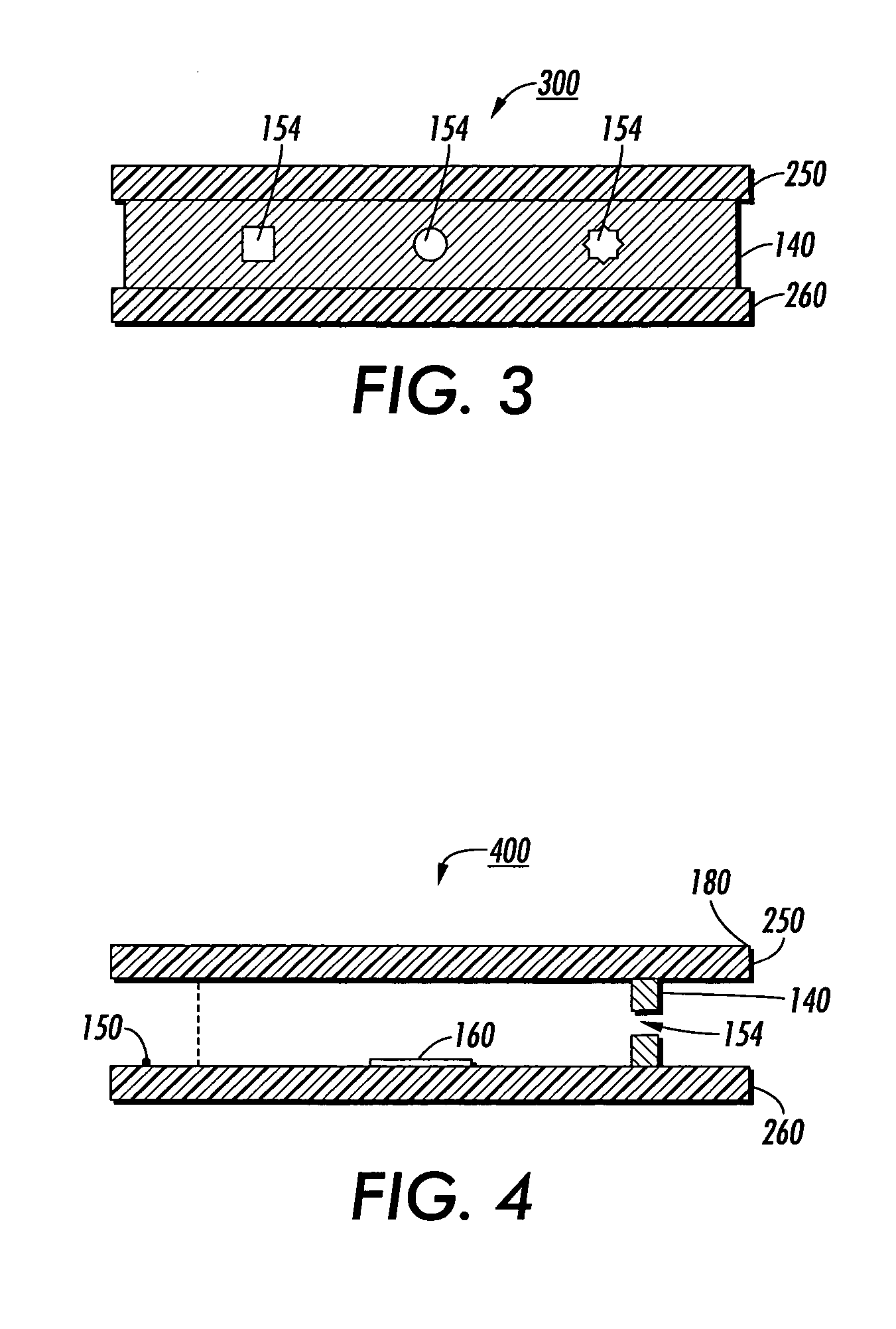Ink jet nozzle geometry selection by laser ablation of thin walls
a technology of laser ablation and nozzle geometry, which is applied in the direction of printing, etc., can solve the problems of asymmetric nozzles, serious problems, and limitations of processing, and achieve the effect of facilitating the exit of print drops during printing
- Summary
- Abstract
- Description
- Claims
- Application Information
AI Technical Summary
Benefits of technology
Problems solved by technology
Method used
Image
Examples
Embodiment Construction
[0014] The reader is again referred to the Markham patent for general details about the fabrication of ink jet printheads, and the general operation of ink jet printheads, as said reference is also incorporated by reference. Of note in the Markham patent is the use of laser ablation to construct a printhead filter, as the present invention also employs laser ablation, but for an entirely different purpose-to construct nozzle exit holes.
[0015]FIG. 1 illustrates the top view of the preferred embodiment for a partially fabricated thermal printhead 100. The printhead 100 is of the “side-shooting” type, although the present invention can be applied to other printhead types. In this figure, the following steps have already occurred. Walls such as those numbered 120 have been lithographically formed to create channels 130 having thin walls 140 blocking the one end of the channels and an opening to the manifold 150 at the opposite end of the channel. The actuator 160 is placed within the c...
PUM
 Login to View More
Login to View More Abstract
Description
Claims
Application Information
 Login to View More
Login to View More - R&D
- Intellectual Property
- Life Sciences
- Materials
- Tech Scout
- Unparalleled Data Quality
- Higher Quality Content
- 60% Fewer Hallucinations
Browse by: Latest US Patents, China's latest patents, Technical Efficacy Thesaurus, Application Domain, Technology Topic, Popular Technical Reports.
© 2025 PatSnap. All rights reserved.Legal|Privacy policy|Modern Slavery Act Transparency Statement|Sitemap|About US| Contact US: help@patsnap.com



